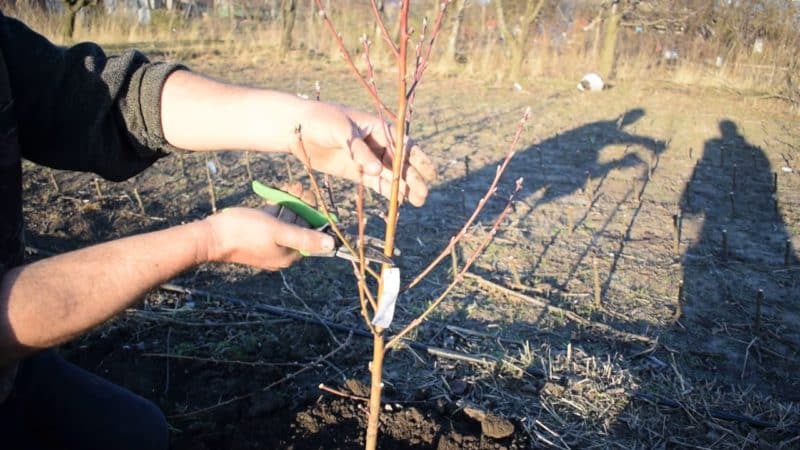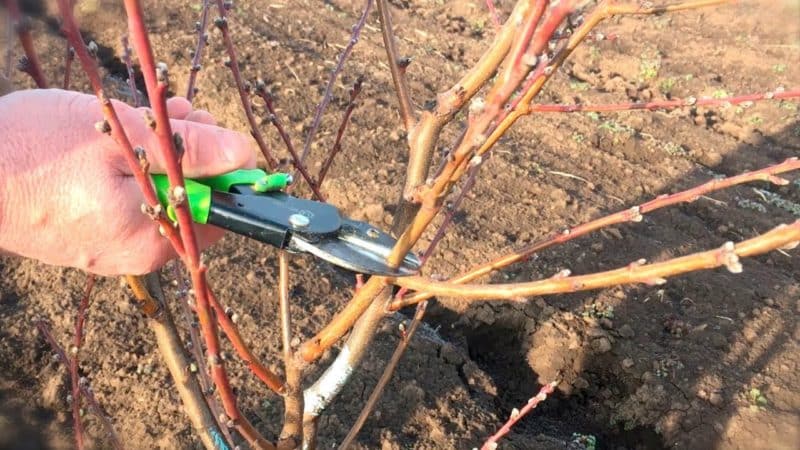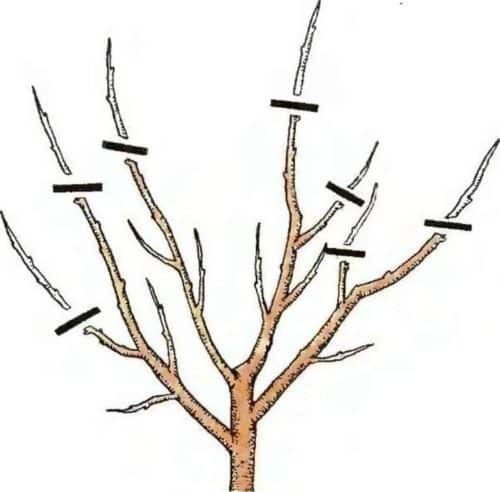How to properly prune a peach in spring and why it is so important
Garden peach is a fast-growing crop: the harvest is harvested already 3-4 years after planting. Peach is demanding to care for, so gardeners regularly carry out agrotechnical measures: watering, fertilizing, loosening, spraying. One of the mandatory care procedures is pruning peach trees in the spring. The number of ripe fruits and their taste depend on it.
The article will tell you what spring pruning is and what nuances to pay special attention to.
Purposes of spring peach pruning
In spring, peach trees are pruned to increase yield and prevent diseases. The procedure improves access to sunlight, facilitates harvesting, and regulates the number of fruits. If you don't carry out pruning, the tree will often get sick, the shoots will grow in a chaotic manner, and the taste and marketability of the fruit will decrease.
Pruning in the spring is carried out during the period of swelling of the buds. It is at this time that it is easy to determine which shoots are no longer required by the peach. Sometimes the plant is pruned not in the spring, but in the fall. In this case, the tree weakens and does not have time to prepare for winter. As a result, the risk of shoots freezing increases, which negatively affects the future harvest.
Beginner gardeners may have difficulties with spring pruning. Many summer residents do not know which shoots to remove first, which gardening tools are best to use, and when to carry out the procedure.
When to prune in spring

Peach is pruned on days when the night temperature approaches +5°C. In the southern regions, for example in Kuban, this is the end of March, in central Russia - the beginning of April, in the Urals and Siberia - mid or late April. The tree wakes up after winter, pink buds swell. From now on there are 2-3 weeks to carry out the procedure. Afterwards the peach blossoms.
Attention! Dry and sunny days are chosen for the procedure. Rainy, foggy and windy weather is not suitable.
It is not recommended to prune the plant during the flowering phase. If you do this ahead of time, the kidneys will not withstand low temperatures and will freeze.
Types of pruning

There are three types of pruning: formative, rejuvenating and regulating.
Formative designed for forming the crown of young trees whose age does not exceed 4 years. Summer residents give the crown the appearance of a bowl. To do this, in the first year after landings the plant is shortened by 50 cm to activate branching. The next year, 3 strong shoots are left, shortened above 2-3 buds, the rest are cut to the growth point. After another year, the developed skeletal shoots are cut by a third and all shoots are removed. In the fourth year the procedure is repeated.
Rejuvenating pruning is carried out 7 years from the moment of first fruiting. The procedure increases the life of the peach tree. During anti-aging pruning, all shoots older than 5 years are removed. The procedure is carried out annually until the tree is 15 years old. An older plant tolerates such events with difficulty. Anti-aging pruning stimulates the growth of young shoots and increases productivity, and creates a well-lit crown.
Regulatory pruning is aimed at regulating shoot growth during fruiting.To do this, remove thick shoots with a large number of fruits and ovaries. Plants of any age can be pruned. Remove broken and damaged shoots: they interfere with the formation and growth of new fruit-bearing branches.
How to trim a peach

In addition to choosing a favorable day for pruning, summer residents prepare garden tools and decide on the choice of pattern.
Required materials and tools
For thin branches, use a garden pruner, and for burrs, use a garden knife. Thick shoots are removed using a hacksaw. To trim mature trees, use a ladder and pruning shears with long handles to reach the top.
Attention! Disinfect equipment with a solution of “Formayod” (50 ml of product per 5 liters of water) or copper sulfate (5%). These substances kill germs and bacteria that cause diseases. The instruments are dipped into the solution for a minute, then wiped dry with a clean towel or napkin.
All instruments must be sharp so that the cuts are even, otherwise the wounds will heal slowly. Dull equipment will harm the plant.
Step-by-step instruction

In order not to cut off excess, before the procedure it is recommended to study the step-by-step instructions for pruning shoots and advice from experienced gardeners:
- Prepare sharp garden tools.
- Inspect the peach tree.
- First of all, remove diseased shoots: plaque, cracks, spots are visible on them. Such branches are dry and do not bear fruit; they are cut off and burned away from the garden plot.
- Remove broken or damaged branches and those growing into the crown and shading others.
- Trim fork-shaped branches and those that grow at an acute angle.
- Remove vertical shoots on skeletal branches - “tops”.
- Remove branches that thicken the crown.
Trimming schemes
For the treatment and rejuvenation of peach trees, the “ring” pruning scheme is used.. To do this, select an old branch, step back from the growth point by 0.5 cm and make a mark. At a distance of 30 cm up from it, a branch is cut off, then the shoot is shortened at the original mark. Thanks to the ring-shaped growth, the plant quickly recovers and fruiting occurs on time.
The “bud-on” scheme is used to regulate crown density and prevent the occurrence of diseases. First, determine how many buds should remain on the branch. They should look not inside the crown, but out. Measure 5 mm from the topmost bud and make a mark; cut off the shoot 30 cm from it. Afterwards, as with the “ring” scheme, the branch is cut at the original mark. It is recommended to remove more than a third of the total number of branches at a time.
To form a healthy and beautiful crown, use the “on a knot” scheme. To do this, cut the branch “to the bud”, leaving a few eyes. Next year, when 2 new shoots appear, the bottom one is pinched and the top one is cut to 2 eyes. With this method, the same shoots will always bear fruit.
This is interesting:
What peach care is needed in the fall to prepare for cold weather?
Care after pruning

After the procedure, the plant sections are treated with natural drying oil or brilliant green: They protect the cut areas from moisture and rot, and serve to prevent the occurrence of viral or fungal diseases. If the cuts are large, they are covered completely. With a diameter of 3-4 cm, only the edges are processed. Some summer residents use garden varnish for this.
Conclusion
Spring pruning is important for healthy crop growth and stable fruiting.All old and dry shoots, as well as branches growing inside the crown, must be removed. For peach pruning, use the “ring”, “knot” or “bud” patterns. For young plants, formative pruning is carried out, for adults - regulating, for old plants - rejuvenating. The equipment is first disinfected and sharpened, and the cut areas are treated with brilliant green or garden pitch. The timing of the procedure is the end of March or the beginning of April, depending on the growing region.